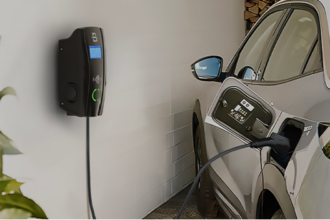What is VDI? Virtual Desktop Infrastructure or VDI is a technology wherein various desktops are hosted on a centralized server, which is later deployed to the end clients upon request.
Since specific desktop images run within virtual machines, it is a type of desktop virtualization and the end clients can access it through endpoint devices like PCs, laptops, tablets, or thin clients. VDI also provides a consistent user experience across multiple devices.
Numerous applications need to be accessed on-demand in modern workspaces, particularly in industries such as finance, banking, and healthcare, and VDI enables efficient and safe remote access, which enhances employee productivity.
Persistent and nonpersistent VDI deployments
VDI can be persistent or nonpersistent and each type has its own set of advantages.
Persistent VDI
A user who uses persistent VDI always logs into the same desktop image, with all changes to its applications and data saved. With persistent VDI, a user connects to the same desktop every time, and users can personalize the desktop to their needs because changes are saved even if the connection is reset. In other words, desktops in a persistent VDI environment operate in the same way that a personal physical desktop would.
Non Persistent VDI
Nonpersistent VDI is commonly used in organizations with a high number of task employees who perform a small number of repetitive tasks yet do not require a customized desktop.
As there is no need to maintain customized desktops between sessions, connecting users to generic desktops with no changes saved is usually simpler and less expensive.
While changes are not saved in nonpersistent VDI. Understanding what VDI is and its uses will let you choose the type of VDI.
Also Read: What Are the Most Common Computer Problems?
How VDI Works
Presuming that all supporting infrastructure is running normally, A user who accesses a VDI solution remotely from their endpoint can manage the operating system, applications, and data on it similar to those running locally.
This configuration allows workers to securely access everything they need from virtually any device, without the need for specialized hardware.
Virtual desktops, when coupled with solutions for convenient single sign-on (SSO) and secure remote access, can also be run and managed alongside the growing spectrum of cloud, web, and mobile apps essential to modern workflows.
There is a reduced risk of unauthorized logins and silos in this setup. However, employees benefit from a unified experience that boosts productivity.
It is to be noted that VDI in regard to a digital workspace platform helps to create a better working environment without compromising safety and security. Nevertheless, the precise ways in which VDI will benefit users is highly dependent upon the deployment type.
The following attributes apply to all VDI deployments:
The virtual desktops are housed in virtual machines (VMs) on a centralized server.
Each virtual desktop comes with an operating system image, which is generally Microsoft Windows.
Since the VMs are host-based, multiple instances of them can coexist on the same server within the data center. End-users must stay connected to the centralized server to access the virtualized desktops it hosts.
Following successful access to the VDI environment, the connection broker of the VDI implementation locates a virtual desktop within the resource pool for each client to connect to.
In the meantime, a hypervisor creates, runs, and manages the diverse host machine virtual machines (VMs) that house the individual virtual desktop environments.
Pros
- VDI offers high flexibility
- Access to superior data center facilities
- It is a safe and secure technology
- It is easy to access
- Device portability is a plus
- The rate of user mobility is higher
- Offers a high performance at a low cost
- This technology offers scalability
- Lower hardware requirements















